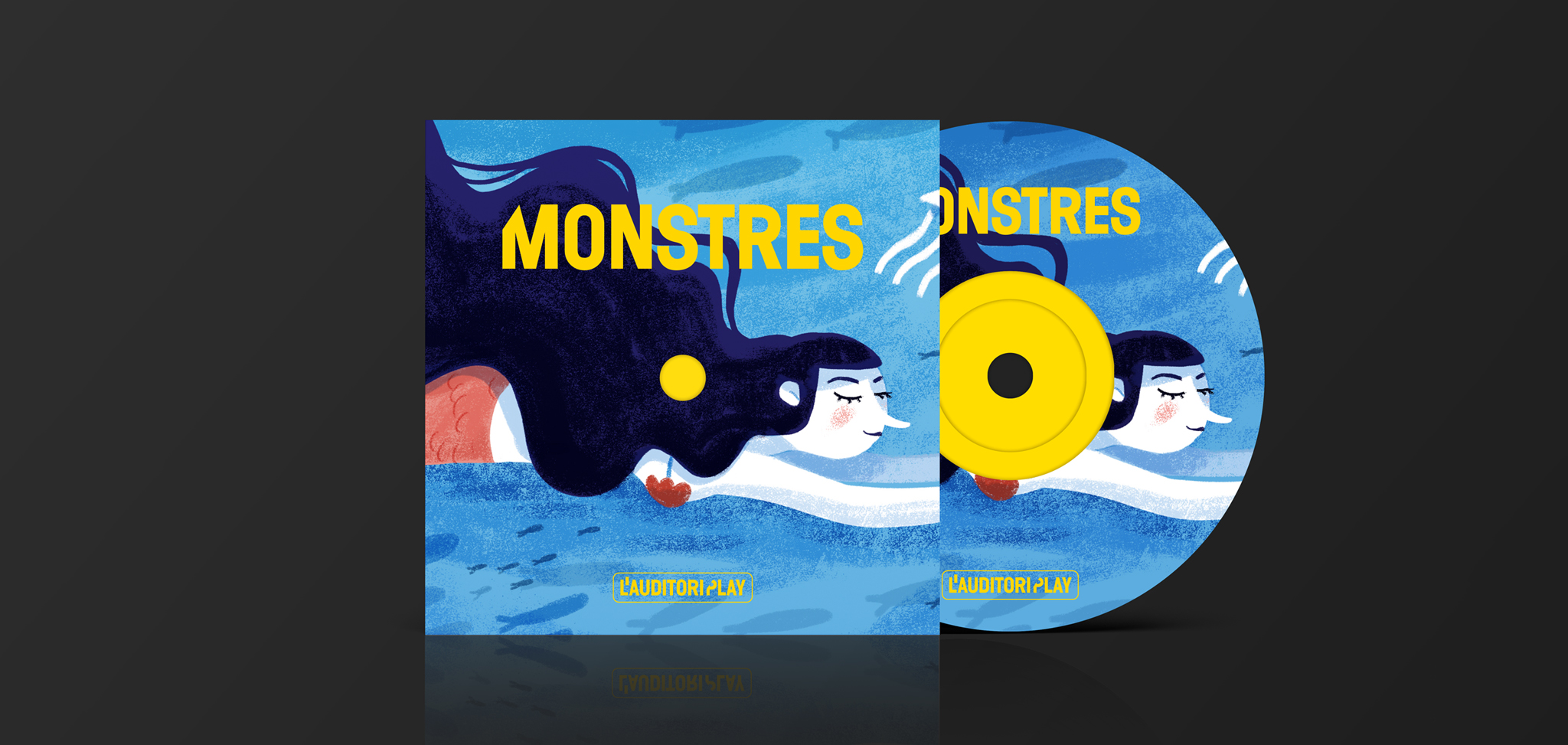
MONSTRES
EDUCATIONAL PROJECT
Fairies, goblins, monsters and mythological characters from around the world are the starting point of this concert designed for the little ones. Based on these legendary characters, we will travel across the five continents and get to know the characteristic sounds of these cultures. Don't miss the most monstrous concert on our schedule!
Selection and musical direction
Martí Serra
Stage direction
Ramon Molins
Script and pedagogical proposals
Alba Pujol

1. Sandman
Martí Serra
Night effects, piano, flute and electric bass
Sandman is the character who opens the door to the world of dreams by throwing his magical sand near our eyes while we sleep, causing us to wake up early in the morning. Let's start our journey to this fantastic and mysterious space where monsters live. Close your eyes and listen as the sounds of the night envelop us, followed by the arpeggios of the piano. With your fingertips, you can trace the melody of the flute as you gently caress your face. But, in the end... pay attention! What monster will come now?
2. A lenda da Pisadeira
(The legend of the Pisadeira). Jacinto Kahwage, music. Valdecir Palhares, lyrics. Arrangement by Martí Serra Voice, soprano sax, electric guitar, electric bass, drums and shaker
The old Pisadeira arrives at dawn to get drunk and sits on the bloated bellies of those who sleep after gorging. The song tells us about this Brazilian legend with the samba rhythm. Let yourself be carried away by this rhythm while dancing freely. Have you noticed when the shaker sound appears and disappears? With some shaker, rattle or maraca you can rhythmically accompany the song while you dance, paying attention to stop or play again as this instrument sounds or stops sounding during the song. At the end of the song, you can sing along with the musicians: «A leeeenda da Pisadeira».
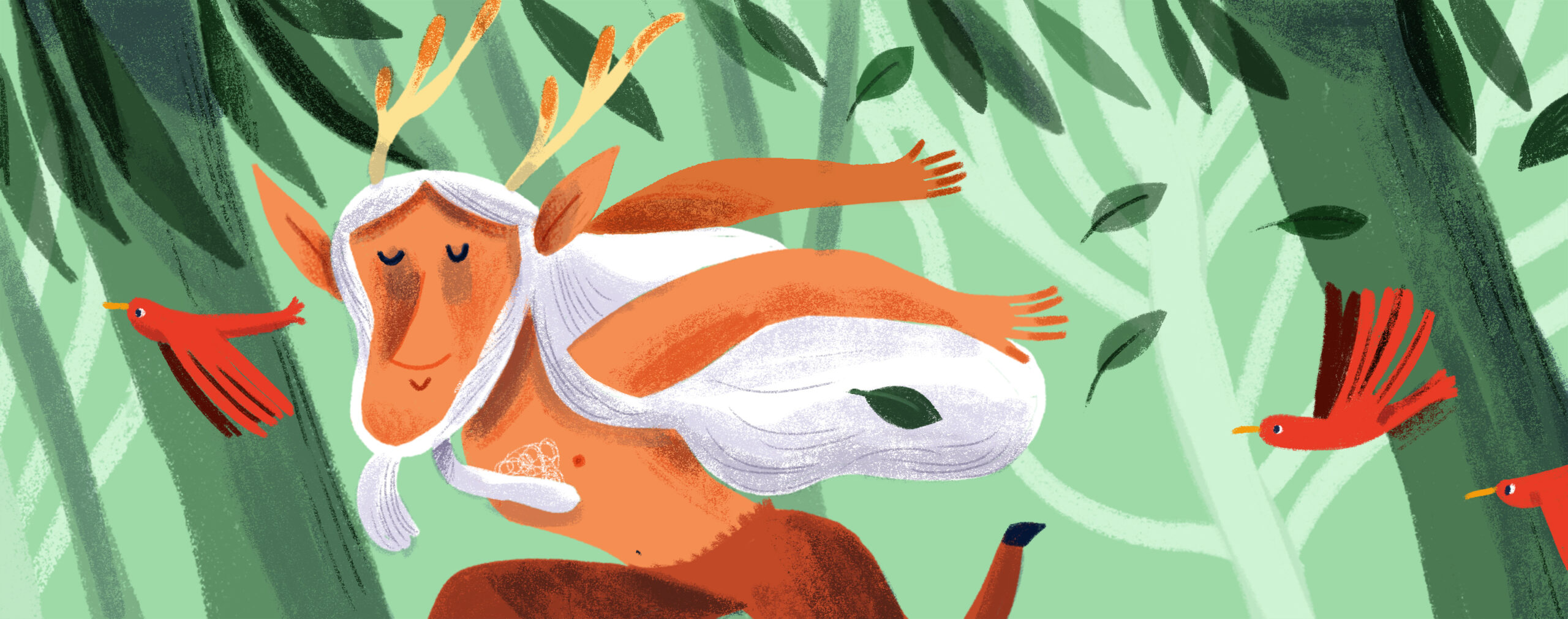
3. El Busgosu
Xuacu Amieva, music. Tere Martín, lyrics. Arrangement by Martí Serra
Voice, guitalele, double bass, square tambourine, percussion and forest effects
From the depths of the forest comes the Busgosu, a character from Asturian mythology, half man and half goat, who protects the forests and all who inhabit them, and punishes those who destroy them.
Listen to the song in motion, imagining yourself to be the Busgosu going into the forest, more and more dense with vegetation, while we hear how the density of the music also grows as the different instruments join it: first, just the guitalele accompanies the voice, later the triangle and double bass are added, until the square tambourine and the other voices also enter. At the end, the piece returns to calm. Close your eyes and listen to the sounds of the forest. Which ones do you feel? With sound objects or with your voice, try to imitate these sounds and characters of nature, playing to recognize them in pairs: one with closed eyes and the other making the sounds.
4. The Bunyip
Aleix Tobias and Martí Serra
Didgeridoo, clapsticks, mouth harp and tambourine
The Bunyip is a fantastic animal from Australian Aboriginal mythology, with dog, fish and reptilian features, that chases people who approach rivers and wetlands. At night, you can hear their cries near the water.
In this piece you can hear the call of the Bunyip through the vibrant, deep and deep sound of the didgeridoo (traditional Australian Aboriginal instrument made from a hollow log that is blown) accompanied by the clapsticks or bilma (wooden sticks struck together that are tapped to keep rhythm during dances and ceremonies). Also listen to the curious and fun sound of the mouth harp that invites us to jump and dance. Find two sticks or wooden elements to create your own clapsticks and follow the piece rhythmically.
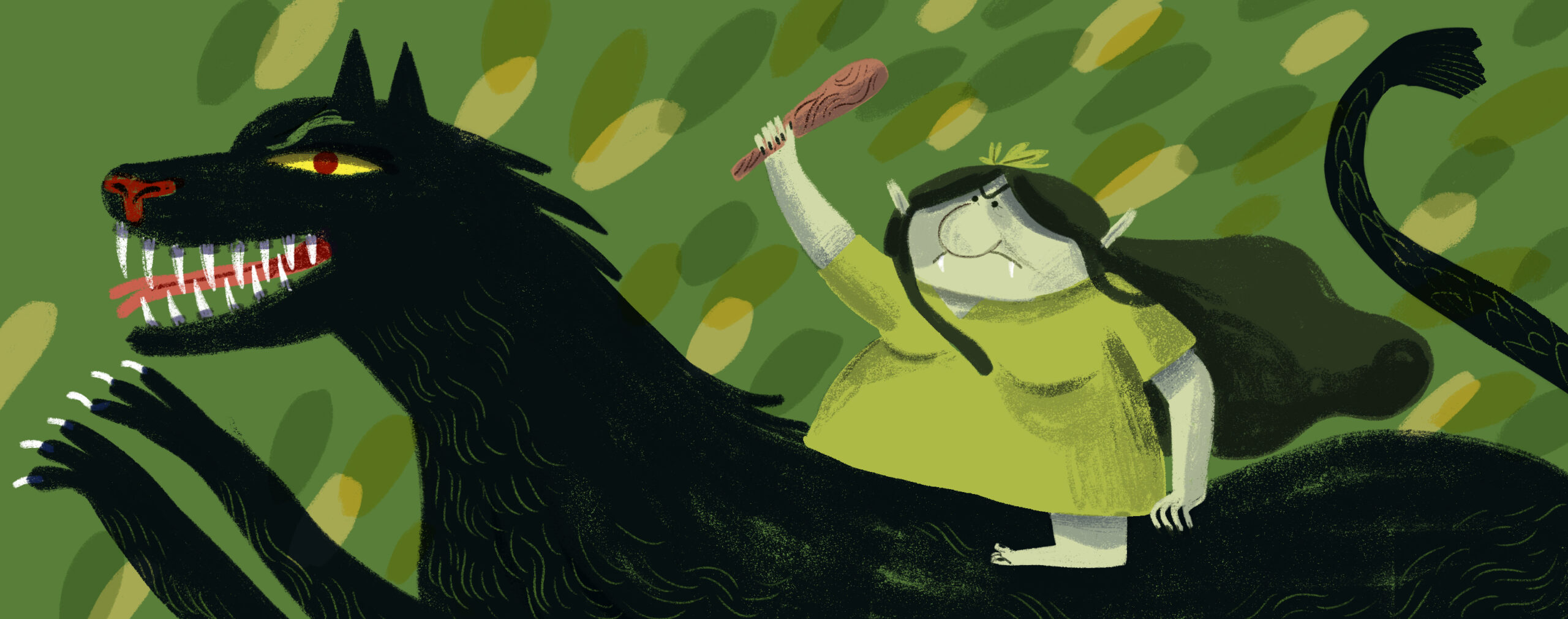
5. Trollmors vaggsång
(Troll Mother's Lullaby). Margaret Holmberg. Arrangements by Martí Serra
Voices
This lullaby is based on a very popular Swedish nursery rhyme that tells us how the troll mother puts her eleven children to sleep. As she cradles them, she gently sings them the most beautiful words she knows: "Ho aj aj aj aj buff".
Listen to the delicate and sweet melody sung by the four voices a cappella. Let yourself be carried away by her phrasing as you cradle the little ones or gently rock from side to side, and play singing along to the troll mother's magical words when they appear in song.
6. La Bête du Gévaudan
(The beast of Gévaudan). Pierre Carrel and Albert Manoury. Arrangement by Jean Ségurel.
Voice, violin, piano and double bass
This is the story of the beast of Gévaudan, a giant wolf that terrified farmers in the 18th century in the region of Gévaudan (Occitanie).
This waltz with a French air transports us to Occitan lands, reminding us of the atmosphere of a town square decked out for dancing. Find a partner to dance the ternary rhythm of the waltz: the piano and double bass will help you follow along. At the beginning, we hear the violin playing the cheerful melody of the refrain. You can dance this part of the song holding hands with your partner. In the sung stanzas, we let go to dance in front of each other and catch each other again every time we hear the refrain again. Finally, we can count: how many times have we danced the refrain with the violin?
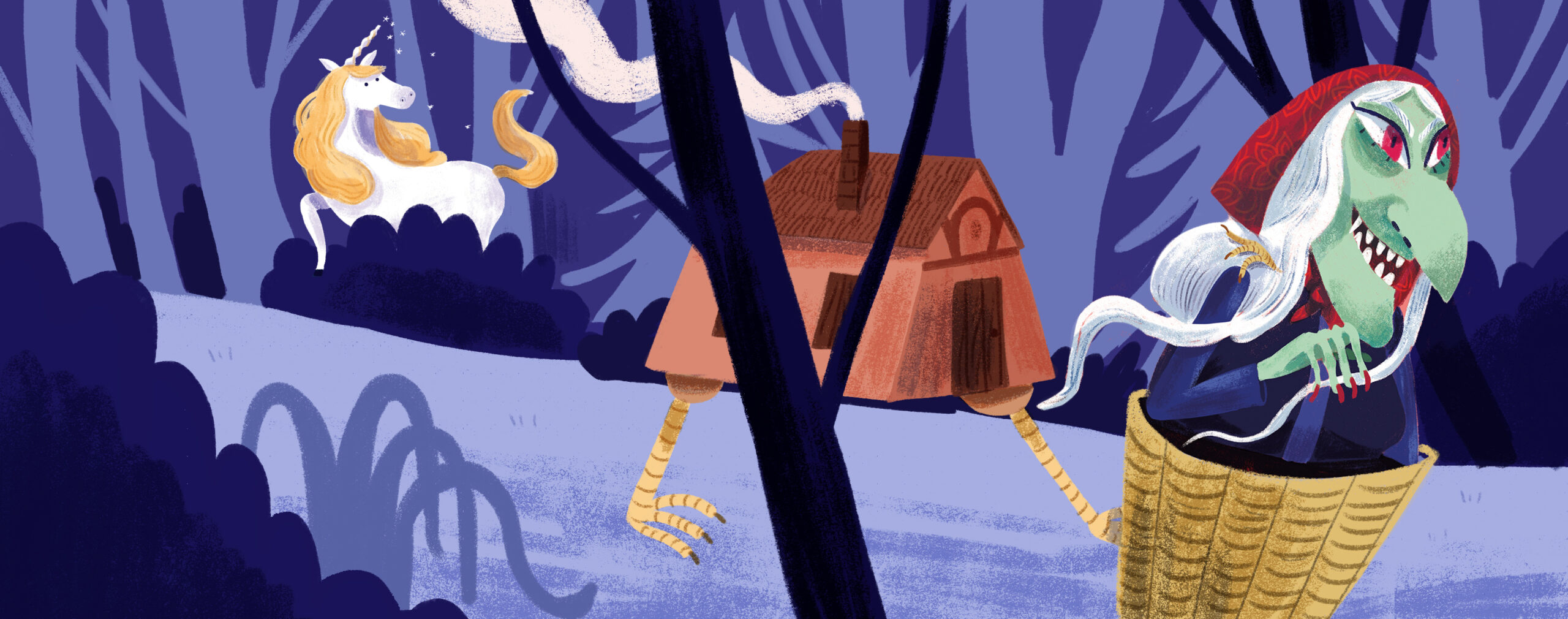
7. Baba Iagà
The hut on chicken legs (Baba Yaga) of the Paintings at an exhibition. Modest Mussorgsky. Arrangement by Martí Serra
Violin, soprano sax, piano, double bass and drums
This is one of the pieces that are part of the famous suite Paintings at an exhibition by Russian composer Modest Mussorgsky.
The witch Baba Yaga is a character of Russian folklore; an evil, bony, wrinkled old woman who lives in the forest in a cabin built on two chicken legs and deceives those who approach her, although sometimes she also helps them.
The arrangement maintains the atmosphere of tension and scares of the original. After the strong initial chords, the shake them of the piano and the mysterious melody of the sax put us on alert... here comes Baba Yaga on chicken legs! The initial chords reappear to give way to a frenetic rhythm chase full of accents and dissonances. Let yourself be carried away by the chaos, expressing with movement and gesture all the sensations and emotions that this music causes you.
8. Unicorn
Dizzy Gillespie
Transverse flute, saxophone, electric guitar, electric bass and drums
The unicorn is a very popular mythological animal known to everyone, with the body of a horse and a long horn in the middle of the forehead. It is often used as a fantasy symbol, and its horn is believed to have healing powers.
In this song by Dizzy Gillespie we imagine the unicorn riding to the rhythm of funk, a musical style that you can easily recognize by its groove characteristic of syncopated rhythm and very marked bass lines. After the introduction, the flute introduces the A theme, which you can follow in motion, trotting like the unicorn while changing direction in each of its four phrases. In theme B, we stand and make circular movements with our heads, as if we were drawing the unicorn's horn. We will alternate the two movements according to the sound of one theme or the other in the song. In the central part, we clap our hands until the unicorn's trot starts again.
When we are clear about this structure, we can transfer it to the plastic language. A folio will be our canvas to draw the paths that the unicorn takes: while we listen and follow the structure of the theme, we will paint the musical phrases that we have previously experienced through the movement.
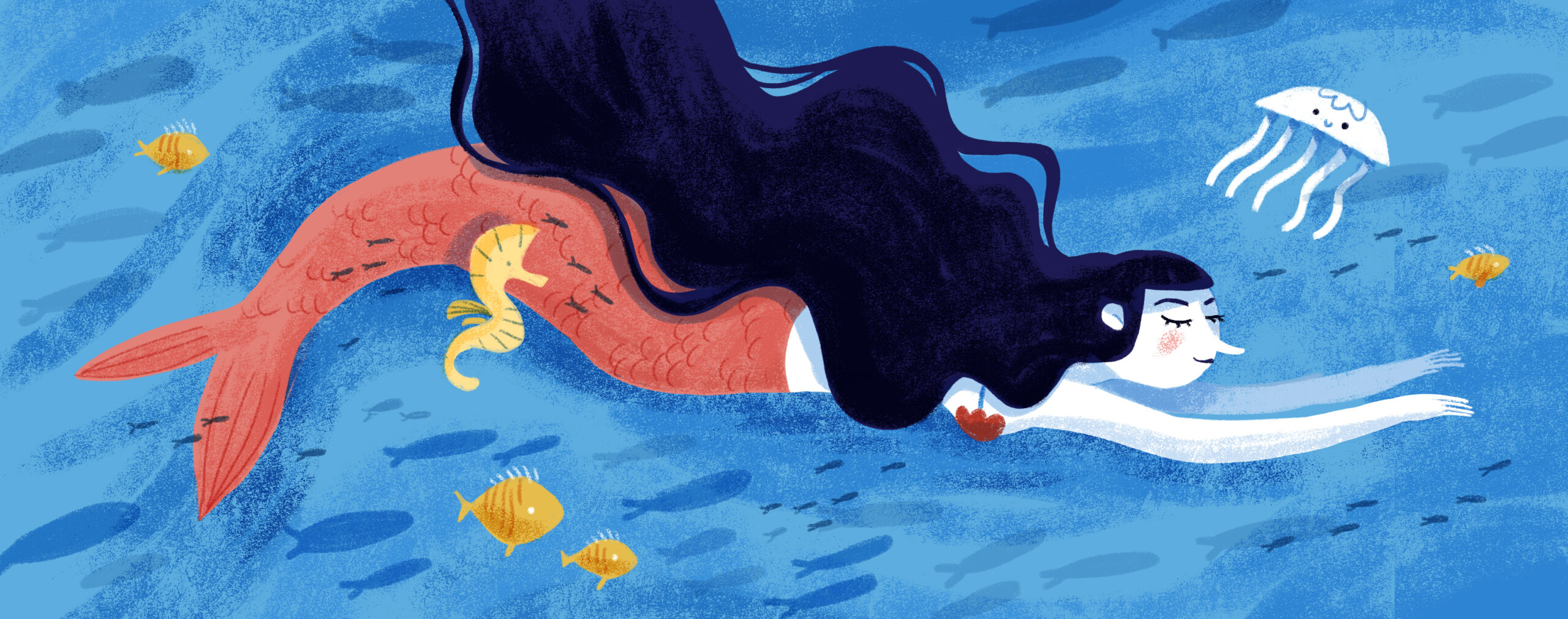
9. Dona d'aigua
Water woman. Joan Isaac**. Arrangement by Martí Serra
Water effects, voices, tenor, sax, guitar, double bass and udu
Water women are one of the most widespread characters in Catalan mythology. Magical beings, guardians of the waters of the forests and their hidden treasures, on full moon nights they come out to dance to their enchanting music.
With this arrangement we return to calm and soak up the sounds and fluidity of the water with the soft and sinuous rhythm of the havanera. Take a moment to listen to it quietly, gently moving your torso, shoulders, head... In the middle of the song you will hear the double bass and theudu (percussion instrument made of clay and similar to a jug that produces a very special watery sound), while the saxophone improvises by playing above the beat.
**© DISCMEDI, SA / WARNER CHAPPELL MUSIC SPAIN, SAU
10. The Mermaid
Traditional English song. Arrangement by Matt Williams and Martí Serra
Voices, violin, whistle, guitar, double bass, bass drum and spoons
We continue towards the sea with this traditional tavern song that tells the story of a mermaid (a half-woman, half-fish character, ubiquitous in seafaring legends) who combs her hair and sings among the waves, and sinks the ships of those who they see The sailors, enchanted by her songs, cannot help but look at her and, inevitably, they end up being swallowed to the bottom of the sea.
The arrangement lets us taste the sounds of folk with Celtic roots and their dance music. We can hear some of his most characteristic instruments: the violin (or fiddle) and the whistle (Irish flute) playing the melodies, accompanied by the spoons on the percussion. Do you dare to explore this fun and simple traditional percussion instrument? Find two spoons, hold them in one hand, between the fingers, and place them on top of each other, facing each other on their curved part. With the other hand, tap them to make them sound and try to rhythmically accompany the song.
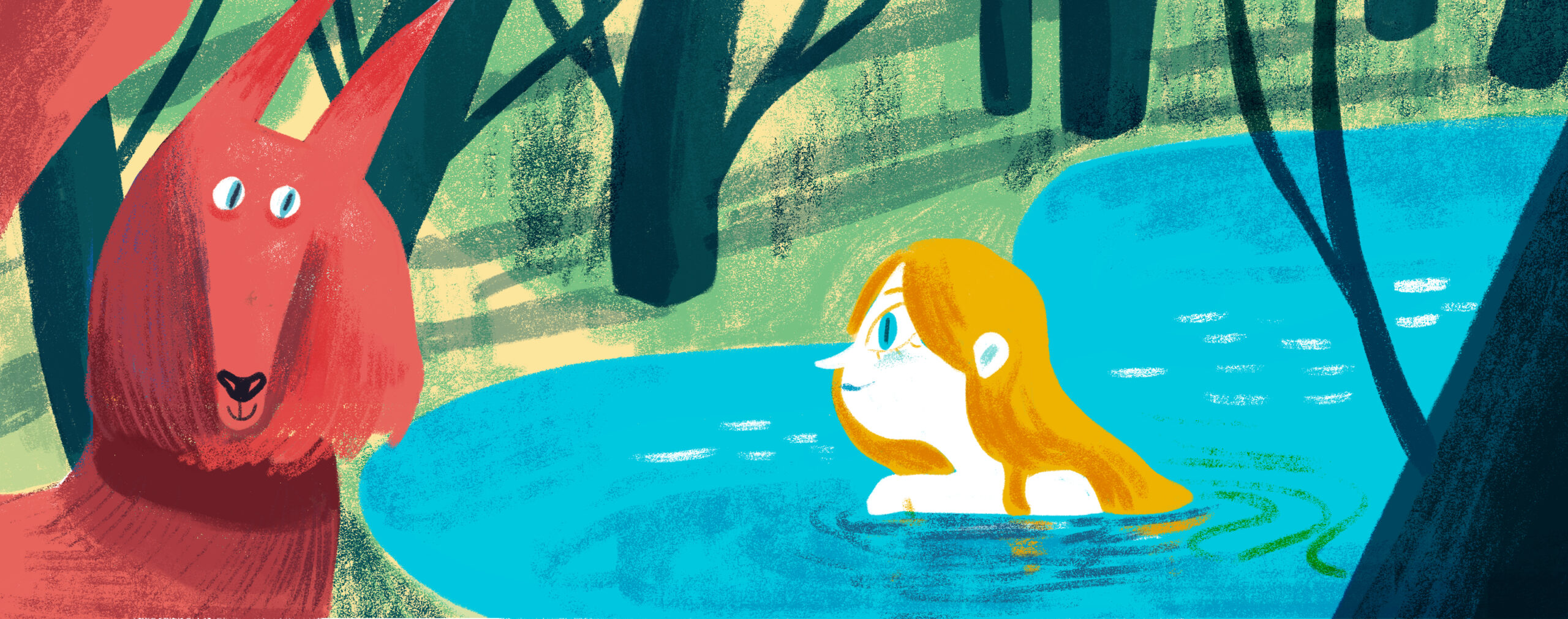
11. El lobito bueno
The little good wolf. Paco Ibáñez, music. José José Agustín Goytisolo, lyrics. Arrangement by Magalí Sare Voice and bongos
Listen to the beautiful version of this poem by José Agustín Goytisolo that was popularized by singer-songwriter Paco Ibáñez. It tells us about different story characters, changing the attributes or characteristics with which we usually define them. We can identify which characters appear in the song and what makes them different. Then, we can sing it and, subsequently, play at thinking of other characters and turn them around (a scary dragon? a warrior princess?…) and create our own upside-down world, while critically reflecting on the many stereotypes that often appear in traditional tales.
Lyrics:
Érase una vez
un lobito bueno
al que maltrataban
todos los corderos.
Y había también
un príncipe malo,
una bruja hermosa
y un pirata honrado.
Todas estas cosas
había una vez.
Cuando yo soñaba
un mundo al revés.
12. La Llorona
Traditional Mexican song. Arrangement by Martí Serra
Voice, sax, guitar, double bass and minor hype
La Llorona is a character originating in Mexican folklore. It represents the specter of a mother tormented by the death of her children who wanders the streets of towns and cities at night, startling the neighbors with her cries and lamentations.
We will hear this popular Mexican song arranged to the rhythm of leg argentina We will prepare by dressing in a shawl or large cloth in the fashion of huipil (traditional indigenous dress mentioned in the song). We can explore the solemn character of the song with slow and parsimonious movements, following the beat that marks the minor hype. When the sax solo starts with the guitar, we can make the fabric dance as the music suggests, accelerating the intensity at the end of the song.
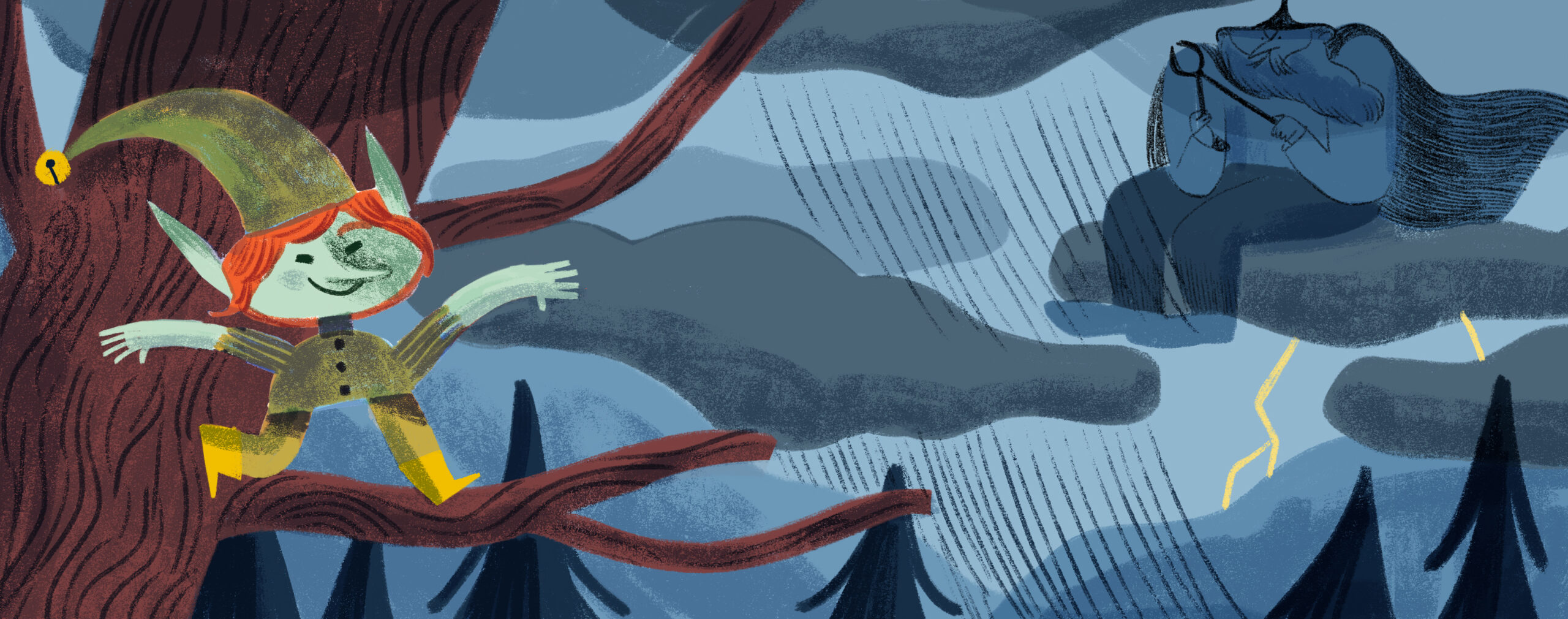
13. Nubeiros e tronantes
Clouds and thunders. Xose Manuel Budiño. Arrangement by Martí Serra
Sax, violin, drum and tambourine
This instrumental milking machine introduces us to the nubeiros (clouds) and the tronantes(thunders) , characters from Asturian and Galician mythology who climb into the clouds to cause lightning, thunder and storms.
Hear how the two characters, represented by the saxophone and the violin, dance the milkmaid to the rhythm of drum and tambourine, in a melodic dialog of questions and answers in which both always ask together and then answer either one or the other. Can you identify them?
In pairs, each person chooses one of the two characters and the melodic instrument (sax or violin) that you will follow. Dance to the song's structure, depending on whether or not your character is playing. In sentences where they sound together, try mirroring movements, imitating each other simultaneously. In the answers, only the one representing the sounding character will move freely. You can bring along two different colored handkerchiefs, one for each character, to visually represent this dialogue.
14. Follet trapella
Naughty goblin. Jaume Sisa. Arrangement by Martí Serra
Voice, soprano sax, electric guitar, piano, electric bass and drums
This is one of the most famous songs from the Dagoll Dagom show Nit de Sant Joan, with music and songs by Jaume Sisa. He introduces us to the naughty goblin, a character who lives around the campfire. Master of ceremonies of the magical night of Saint John, the goblin will make all our wishes possible.
The arrangement contrasts the delicacy of the voice accompanied by the piano in the stanzas with the festive and danceable rhythm of reggae in the refrain.
Be encouraged to sing the song with the musicians. You can accompany yourself with scarves or colorful fabrics. In the stanzas, you can create a very wacky costume and build your character. In the chorus, when the reggae rhythm enters, let yourself be carried away by the debauchery while singing and dancing, feeling the setbacks that the guitar is marking us, moving your arms up with the handkerchiefs to recreate the movement of the flames of our bonfire
Lyrics:
From a star is watching it,
trapeze goblin, trapeze goblin.
From a star is watching it,
goblin trapella comes flying.
Put on costumes, get silly.
Come quickly to our side.
If you look at the flames
of the Saint John fire
you will see his horns
hat and gloves.
At the eve we go dancing;
and the couple, and the couple,
at the eve, let's dance;
and the couple we hope to find.
The whole life can be hidden
in the bonfire of Sant Joan.
If you look at the flames…
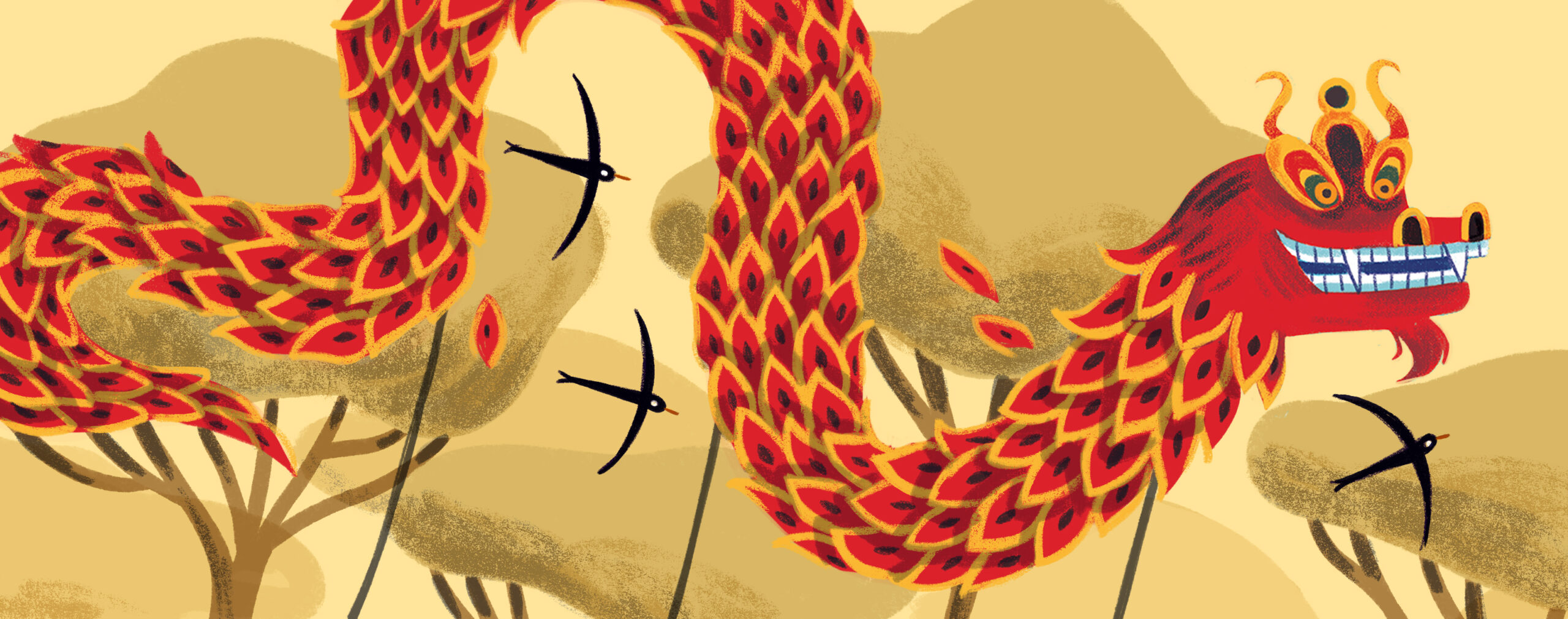
15. Dansa del drac
The dragon dance. Traditional Cantonese rhythm. Arrangement by Aleix Tobias
Cymbals, Chinese gong and taiko
The Chinese dragon is a sacred animal in Chinese culture. It is represented as a creature with an elongated body and bright colors, similar to a snake. Large-scale representations are made of clothes and cardboard. Dancers dance these long figures in various festivities, such as the Chinese New Year: it is the traditional dragon dance, with undulating movements accompanied by the music of gongs and drums. So listen to our dragon dance. You can take it as inspiration to create your own version: with plates, lids or other kitchen utensils, invent a simple rhythmic composition and dance it with a long cloth or sheet, following the movements of the dragon.
16. El ball de la Cucafera de Reus
The dance of the cucafera. Daniel Carbonell Sugranyes
Soprano sax, transverse flute, box and baroque tabla
The cucafera is a well-known beast from Catalan mythology, with a dragon's head and a turtle's shell, an elongated and extensible neck and sharp teeth. You can see her walking around many places in Catalonia during her major festivals, such as the one in Reus, where she dances to the tune you will hear below. After an introduction, you will hear how this piece is structured according to the ternary, three-part musical form: ABA. The first and third parts (A), happy and animated, are repeated, contrasted by the central part (B), more solemn and leisurely. If you feel like dancing, you can make up your own moves and steps for each of the parts.
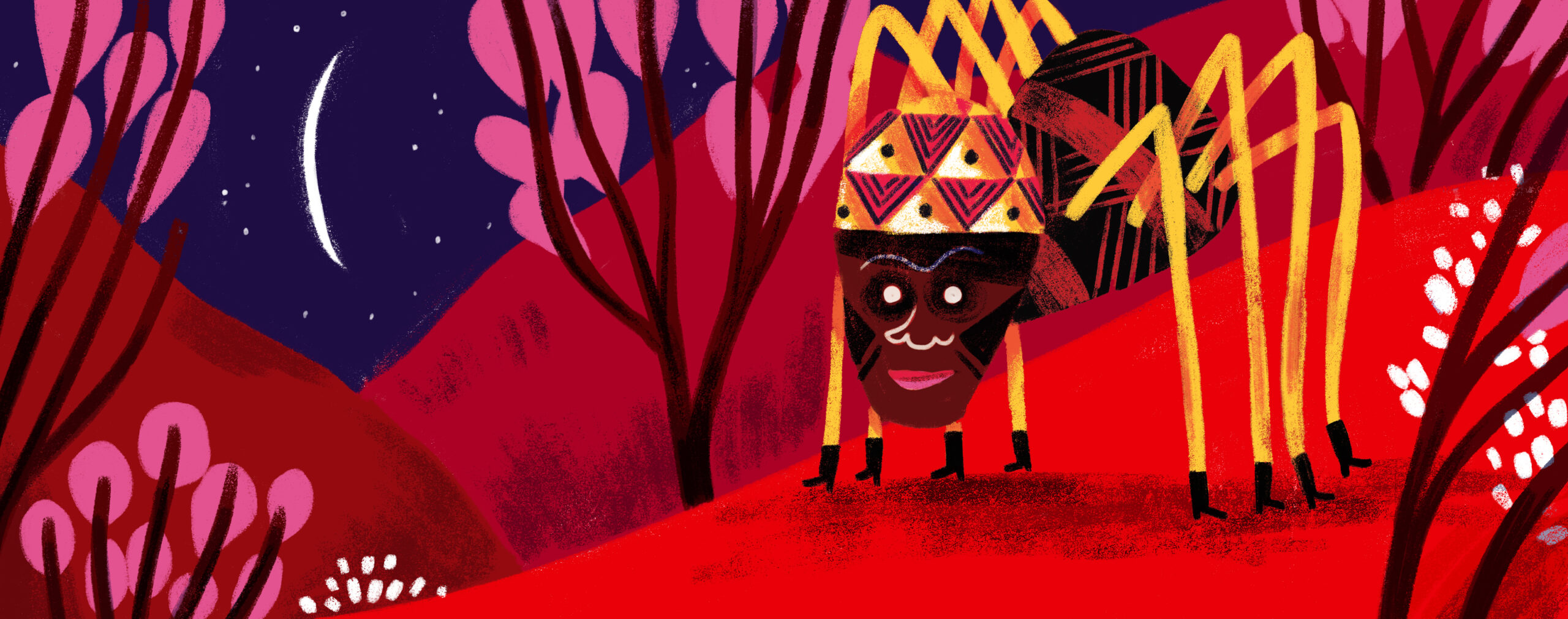
17. El Lobizón de La Escondida
Los Sena
Voices, flute, sax, guitar, double bass and jaw
Awww! Do you hear that howl? On full moon nights, Lobizón, the werewolf, appears transformed into this beast, howling and dancing under the moon. The song tells us the story of this character to the rhythm of I called, style of music and dance from northeastern Argentina that is danced in pairs. Be encouraged to dance to it, and in the instrumental parts, join in with your howls and I know (long, high-pitched cries of joy characteristic of I called that musicians and dancers do).
If you listen closely you will discover another curiosity about this song: the percussion instrument that plays in it is a jaw, an instrument made from a cow's jaw. Can you distinguish its very particular sound?
18. Wintin Wintin
Kouame Sereba . Arrangement by Aleix Tobias
African voices and drums
This rhythmic and energetic composition is based on traditional African rhythms and introduces us to Anansi, one of the most relevant characters in the legends of West Africa and the Caribbean. In the form of a spider, Anansi is a wise character, of great cunning, creativity and wit.
First, you will hear the melody, as a call to bring Anansi out to dance. You can join in singing with the musicians: «One-one-o nabiyo, ya, yo ya». Immediately, the drums enter and Anansi arrives with his dance. You won't be able to avoid moving your body. Let yourself be carried away by the energy of this African drum, dancing while you explore wide and creative movements with your arms and legs, as if they were Anansi's legs. Towards the end of the piece, theaccelerating of the drums will speed up your dance, which you can also accompany rhythmically, clapping your hands.
19. Qui tenen els monstres sota el llit?
Who have monsters under their bed? Martí Serra
Voices, flute, sax, electric guitar, electric bass, square tambourine and drums
This song ends our journey through the imagination of monsters, which has led us to discover songs, sounds and instruments from all over the world. All these fantastic monsters and characters have made us navigate, through their music, through a sea of emotions: surprise, fear, joy, sadness... But what about them? Once they're home... who's afraid of the monsters? We invite you to sing and dance the song with us.
Lyrics:
Mr. Vampire
he spent the night looking for dinner
and ended up biting the neck
of a clueless night owl.
And this werewolf
howling under the moon
has sown terror everywhere
and now it's time to rest.
But when he gets home
non-non, sonnet, sleep
he puts on his pajamas
and fast to game
it is covered with the flasada
and when he turns off the light, Alas!
"What do I have? Who is there? what do i have Who is here?”
Who has the monsters under the bed?
It's been a long day
by the witch, that time has passed
stirring the full cauldron
of spells and potions.
And the ugly and dirty ogre
the child he is carrying wants to crunch
but he gets very tired
now it's time to rest.
But when he gets home…
Ai, ai ai ai,
qui tenen els monstres sota el llit?
CREDITS
Gemma Abrié, double bass, electric bass, percussion and voice Carlos Montfort, acoustic, electric and Spanish guitar, guitalele, percussion, violin and voice Magalí Sare, piano, keyboards, flute, percussion and voice Martí Serra, tenor sax, soprano sax, whistle, piano, double bass, percussion, didgeridoo and voice Alex Tobias, drums, percussion and vocals
Recording, editing, mixing and mastering: Ferran Conangla and Enric Giné
Illustrator: Anna Aparicio Catalan
Artistic coordination: Gloria Mas Chacori
Head of the Educational Service: Marta del Olmo
Album recorded from June 6 to 9, 2022 in Room 2 Oriol Martorell, L'Auditori de Barcelona.
in collaboration with

